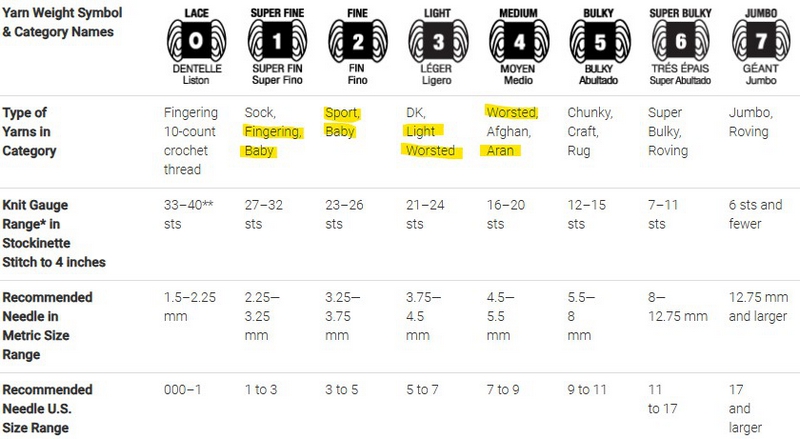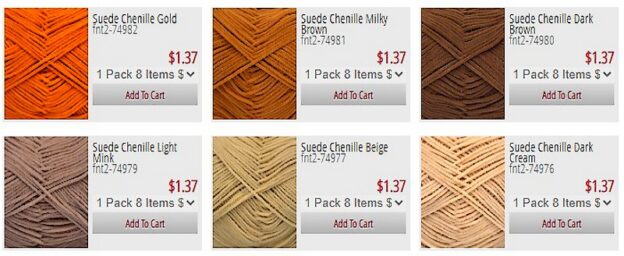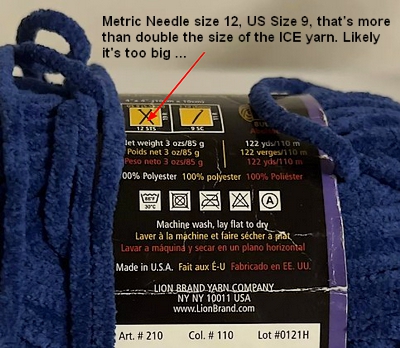When “Vernille” burst on the fly tying scene it made significant inroads into our use of rayon chenille. At the time, chenille was weak – relying on a pair of twisted threads to hold fibers onto a spun core, and even the most careful handling caused the weave to lose their integrity and start to shed fibers, often resulting in a mangy or lumpy look to the fly.
In contrast, Vernille could be manhandled, wound repeatedly, and would not lose its structural integrity nor its fiber payload via hammy fingers and unravelling ends. Vernille, also called “velvet chenille” or “ultra chenille” was superior in both function and tolerance of abuse, and only the lack of colors and sizes were problems, issues that were soon rectified.
Chenille and Vernille share similar issues in that fly shops tend to only stock the “medium” size, ignoring the fact that multiple sizes exist, and never offer the product in “skein” form, a 150 yard bundle common to the fabric business, relying instead on prepackaged three yard cards to ensure you visit your fly shop frequently.
Fly tiers need to understand that yarns are like cars, not every color is available
Fabrics, and the yarns that make them, have short lifespans due to the fickle nature of fashion trends. Yarns may only have a window of one to three years before they are discontinued in favor of “the new hotness” in yarn weight and color. Seasonality also determines availability, given heavier yarns seem to be most plentiful in the Winter, and lighter yarns in Summer. Occasionally yarns can be tied to specific garment types, like socks or swimsuits, and their availability and longevity are influenced by the garment usage.
Colors have a similar issue in that yarns made for baby garments tend to be heavy on pastels and light on the vivid Steelhead colors or flourescents. Yarns destined for sweaters will have both pastel and vivid colors, and those for evening wear will even have tinsels and mylar in their weave. Fly tiers need to understand more about their yarns to better predict their availability.
This frequent obsolescence cycle ensures that fly tiers that don’t purchase a multi-year supply of colors are at risk of minor or major shortages later, when the yarn is discontinued by the manufacturer. Fly shops aren’t helping this issue, due to their insistance we buy a three yard card, instead of skeins of our favorite colors.
Trout anglers need the taupes, olives, browns, and earth colors. Steelhead fishermen desire the scarlets, purples, flourescents, and outlandish flavors, and the yarn industry determines what colors they market by garment type and usage, ensuring not every color will be available for each yarn introduced. This means that yarn colors are like cars, and for the 2024 model year they won’t market a “purple” – but it may be available in two years when they reintroduce the yarn!
I only buy skeins, never cards, so all my yarns and chenilles are purchased via fabric and yarn stores, not sold by fly shops. I’d love to give the local fly shop business, but so long as they only stock cards, I will buy yarns and chenille elsewhere.
The last article I published on where to find “Vernille” or “Ultra-Chenille” in the Wild is no longer accurate due to its age, so this is a much needed update to make it easier for you to find where Ultra Chenille sleeps at night …
Weight and Needle Size, a Fly Tier’s lesson in knitting
Understanding yarn weights is not easy, and you have to be careful that you are ordering a yarn capable of tying flies versus too big for anything other than a 6/0 hook. Knitters have elements on the yarn label that denote size and use, and this is a foriegn language to fly tiers.

We’re used to large, medium, fine, and they use terms like “fingering”, “baby”, and “worsted”. Needle size is also a measurement of yarn width, so if the label lacks English, (as many do) the needle size denotes yarn size information as well.
While not an expert, I will attempt to translate. “Fingering” and “Baby” correspond to our “fine“, “Worsted” and “Aran” correspond roughly to our “medium“, “Chunky” could be large, depending on the yarn … and anything bigger is largely unusable for fly tying. As yarn is made by both metric and standard manufacturers subtle differences in size do exist.
Armed with how to read a yarn label, we’re now ready to buy some suede chenille.
Search Engines don’t help much
Search engines don’t help much when searching for this type of chenille, as the result is dominated by fly shops and their tiny little cards. Years ago, Vernille was called “Velvet Chenille” and now the more accurate term is “Suede Chenille.” Searching for either returns numerous pages of fly shops and their carded offerings.
The trick is finding yarn manufacturers that make Suede Chenille, and exclude the fly shops selling it.
When on a manufacturer’s website you’ll be innundated with pages of yarns whose colors and qualities look useful. The quality of the photographs will determine if you can distinguish between four-ply twisted wool and suede chenille. You will also find many yarns you’d like to inspect further – but will have to purchase, have sent to you, then inspect by hand to determine if the yarn is useful or not.There is no ironclad search term that will remove the fly shop data from what you’re looking for, you simply have to search for yarn manufacturers both in the US and abroad. To shorten your search and to apply your sizing information, feel free to use my suede chenille vendor of choice, ICE Yarns, of Turkey.
ICE sells on both Ebay and direct to consumers and appears to be one of the larger yarn companies on the planet. They call their “vernille” yarn, simply “suede chenille”, and is available in 26 colors and only one size, my favorite, which is “fine“. I have found many other suede chenilles at other vendors and manufacturers, in multiple sizes, but ICE makes a superb yarn whose size allows me to double wrap my chenille bodies instead of only single wrap. In addition, this smaller size allows me to use for trout flies as well as steelhead flies, which is a additional bonus.
Note the yarn is listed as “light” and “worsted”, with a needle size of 4 metric. On our yarn chart above, it is a “3” in size. That would make a true “medium” yarn an “aran” or “4” for this company. It is a “microfiber” yarn, typically 100% Polyamide, and will look and feel the same as the yarn sold in the fly shops, only about 25% smaller width than their “medium” thickness.
The price of the ICE Suede Chenille is $1.37 per 155 yards (one skein), and is only sold in packs of 8 skeins per package, about 1000 yards of chenille for about $11 dollars. Shipping is very expensive, because it’s from Turkey, so expect to pay about $6 per pack (of eight skeins) to get it to the US. This is “rock bottom” cheap. Seventeen dollars for for a lifetime supply, equivalent to 300 of the fly shop cards (@$2.50 each) …
Get together with some of the other tiers at your casting club and work out the colors needed for an aggregate order for everyone. Most tiers will only need one skein for a lifetime supply, so find seven other tiers and split the packs evenly – reducing the cost to a couple bucks for each skein.
I’m not going to spend additional time finding vendors of the larger sizes, I will leave that up to you. I will mention a couple of candidates that I have not yet investigated, Toucan lists a “worsted” suede chenille using a larger needle size, don’t order large amounts until you have confirmed it to be the correct size. Order a single skein and verify it is what you expect, it’s the only way to ensure you are looking at the correct size and texture. Note that this yarn is about half pastel colors so if you’re looking for flourescents and similar, you’ll need to find an additional yarn,
Most of the suede chenille yarns you’ll find at Michael’s are of the “Bulky” or “Super Bulky” variety. If you are purchasing it via the Internet and unable to handle the yarn, you must confirm the needle size on the label to guarantee it’s a fit for fly tying. If the needle size is not apparent, look for the textual description of size; fingering, worsted, etc.
Lion has discontinued the “Lion Suede” yarn, but we can use it as an example to determine its suitability for fly tying… Skeins are still available on Ebay, and from those I took the illustration above. Note the needle size is more than double my “fine” example, making this yarn a really thick (bulky or superbulky) suede chenille.
As ICE is liable to make this yarn only for a short time, another tool to assist your search is the Yarnsub.com website. It allows you to enter the name of a yarn that used to be available, and it will recommend yarns like it that are currently available. This is valuable as it gives you a half dozen new leads to focus on for your search.
Entering “Lion Suede” into its search engine produces other suede chenille yarns for you to consider. Use your skill with needle size and the size chart, above, to determine if any of the options are in your size range. Note that Lion Suede is a bulky yarn, so most of the solutions are also “bulky.” Those listed as “baby” are likely what you’re looking for – as “baby” is a smaller size. Clicking on the smaller size yarn will change the search criteria to matching yarns of the smaller size, allowing recursive searches to refine what you need.
Take a trip to Michael’s or your local yarn outlet to practice your visual sizing. There are small differences between standard and metric sizing, and you need to practice reading the yarn label to connect the yarn size in your hand with the needle size listed on the label. The internet does not allow you to touch the product, so your only option if looking for something special is to learn the sizing nomenclature and committing the reserved words; Worsted, Baby, and Fingering, to memory.
On a final note, not all velvet and suede chenilles are created equally. Some of them (especially the bulky and superbulky sizes) can have a very loose weave akin to rayon chenille, so they will fall apart if not gripped carefully. It is ALWAYS preferable to order a skein of a candidate yarn and examine it in person before jumping into a larger order of every color desired. This will save you the embarrassment of overlooking the “superbulky” on the label, or the label might be entirely in Chinese characters, and no translation is possible.
Do your due diligence on each candidate, order a single skein to confirm the properties; size, texture, and construction, and only then order a lot of the yarn.
Follow Up Note:
I ordered skeins of the Toucan Fine, the Boheme Velvet, and the YarnArt Dolce Baby yarns to see if they were also suede chenilles. Each would be described as a “medium” chenille, so the sizing is correct and the labels are the same size as our traditional chenilles (note the needle size mentioned for future searches). They are not “vernille” or suede chenilles, I would classify them as either traditional rayon/polyester chenilles akin to what we normally see in stores, or they are velvet chenilles, not woven tightly enough to qualify as what we know as a “suede” chenille. The Toocan Fine is my favorite of the bunch, but being traditional chenille it will unravel if the ends are not carefully handled. The Boheme Velvet is a knitting chenille, and is partially flat, something I find unique to chenilles made for knitting. It can be spun to a round chenille easily enough, but in its native form has some flatness to it, almost like they flattened one of the four sides. Lashing it onto a hook shank and spinning the strand will return it to a “round” chenille shape and texture.
In summary, these are the correct sizes for our traditional medium chenille, these are not vernille or suede chenille as we know it.



Pingback: Part 1 of 2: Bobbin Reviews: Lots of Options, Plenty of Price Points, and a Glimpse of the Future | Singlebarbed